Lauren Halsey’s Met installation brings a piece of Black Los Angeles to New York
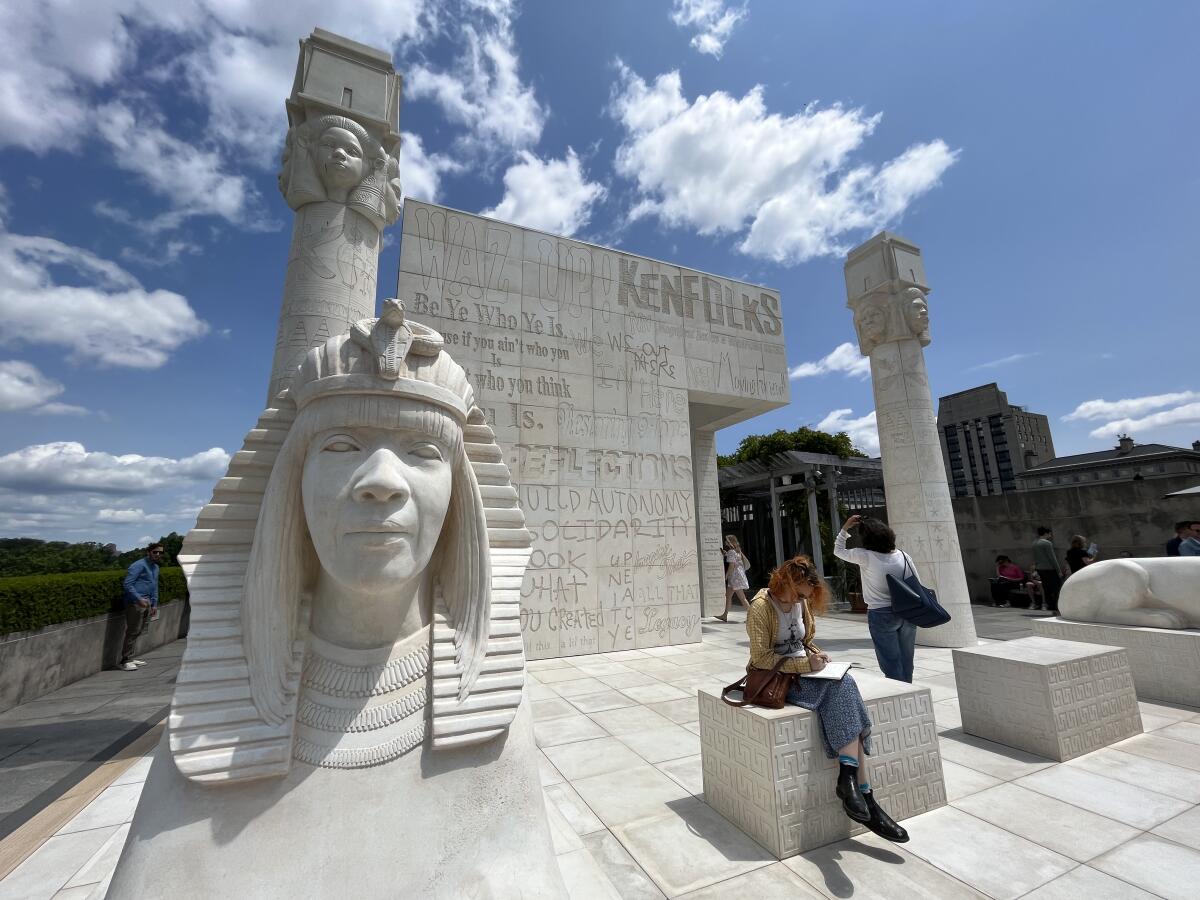
This is now a “Wham!” newsletter with some fine arts attached. I’m Carolina A. Miranda, art and design columnist for the Los Angeles Times, with the week’s essential arts news — and ’80s fashion mood boards:
A temple for us and by us
Temples across cultures may be built to venerate deities, but they also reveal a lot about the daily life of the people who built them. The Temple of Dendur, for example, that remarkable ancient Egyptian structure that stands inside the Metropolitan Museum in New York, honored the goddess Isis, among various deified rulers. But its decorative motifs — papyrus and lotus plants — also mark aspects of quotidian life, such as the significance of certain plants in Egyptian culture.
The Met is currently home to another, more modern temple: “the eastside of south central los angeles hieroglyph prototype architecture (I),” by Los Angeles artist Lauren Halsey. The structure, created from glass fiber-reinforced concrete, adapts the aesthetics of ancient Egyptian architecture to tell a story about Los Angeles — specifically Black Los Angeles — and echoes a structure Halsey produced for the Hammer Museum‘s “Made in L.A.” biennial in 2018.
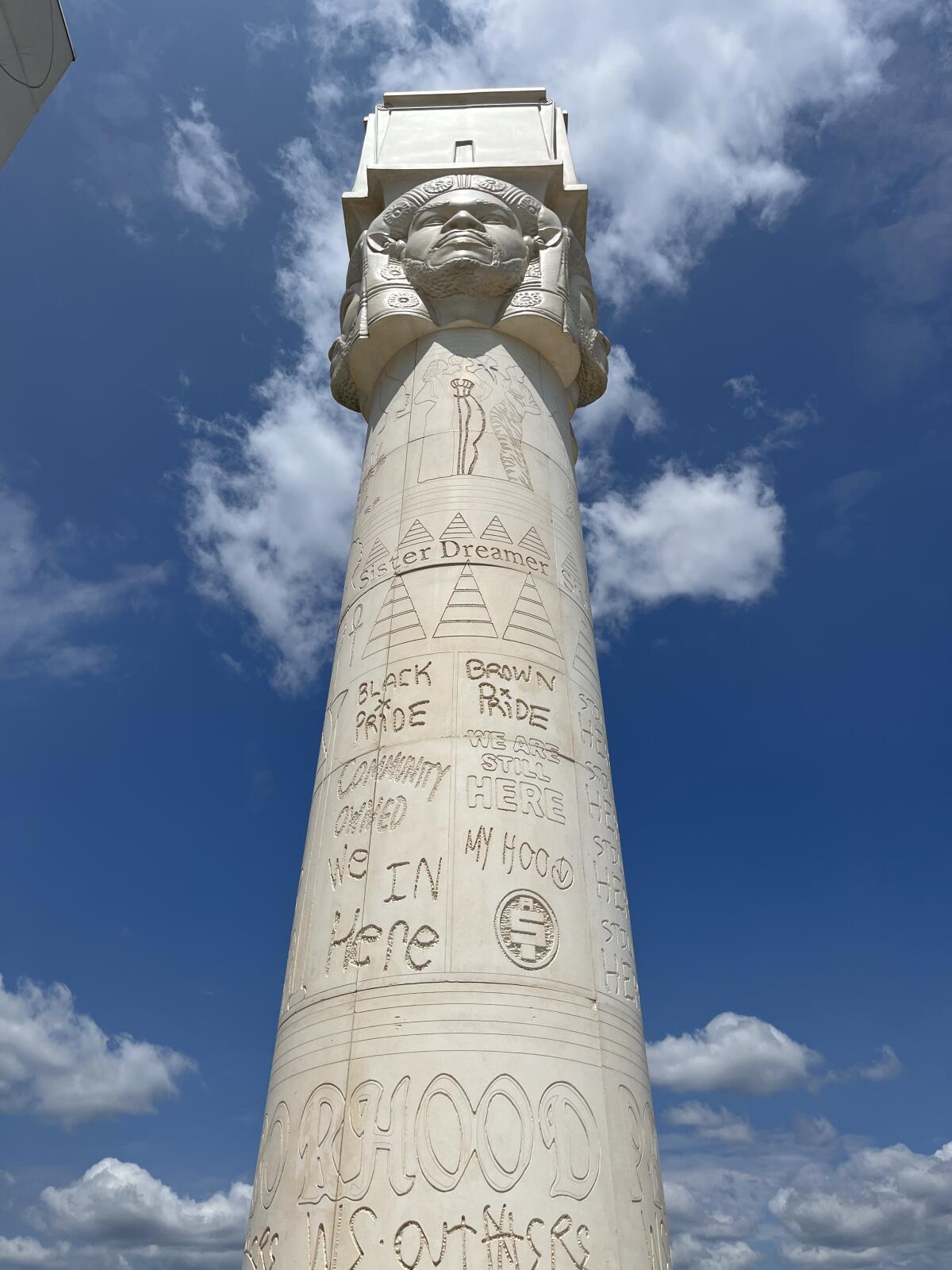
For years, Halsey has been developing a concept for a monument that would pay tribute to Black life in L.A. (her family took root here in the 1920s) — which I wrote about in a profile of the artist in 2018. The installation at the Met reveals a bigger and more splendid iteration of her ideas.
Like her previous work, it pays tribute to vernacular design — bearing images of bouncing lowriders, the Watts Towers and the hand-drawn signs that materialize on lampposts and chain-link fences advertising services such as plumbing and hair braiding. (Photographer Camilo Jose Vergara, who has long recorded these sorts of homemade signs, and whose work Halsey has referenced in the past, recently wrote an intriguing essay for Common Edge about trying to track down the artist behind a ’90s-era Egyptian-themed sign for braiding services by Jade.)
Make the most of L.A.
Get our guide to events and happenings in the SoCal arts scene. In your inbox once a week.
You may occasionally receive promotional content from the Los Angeles Times.
The temple also draws heavily from ancient Egyptian architecture (a running theme in Halsey’s work) and is framed by fluted columns and several sphinxes, one of which bears the visage of the artist’s mother. Moreover, the decorative elements are carved in relief into the surface of the structure — much the same way ancient Egyptians decorated their temples.
In a video produced by the Met about the project, Halsey describes this fusion as conflating the aesthetics of South L.A. with historic objects at the Met as well as her own “fantasyscapes” and ideas about maximalism.
The final product is a stunner — especially on a sunny day, when the structure practically sparkles.
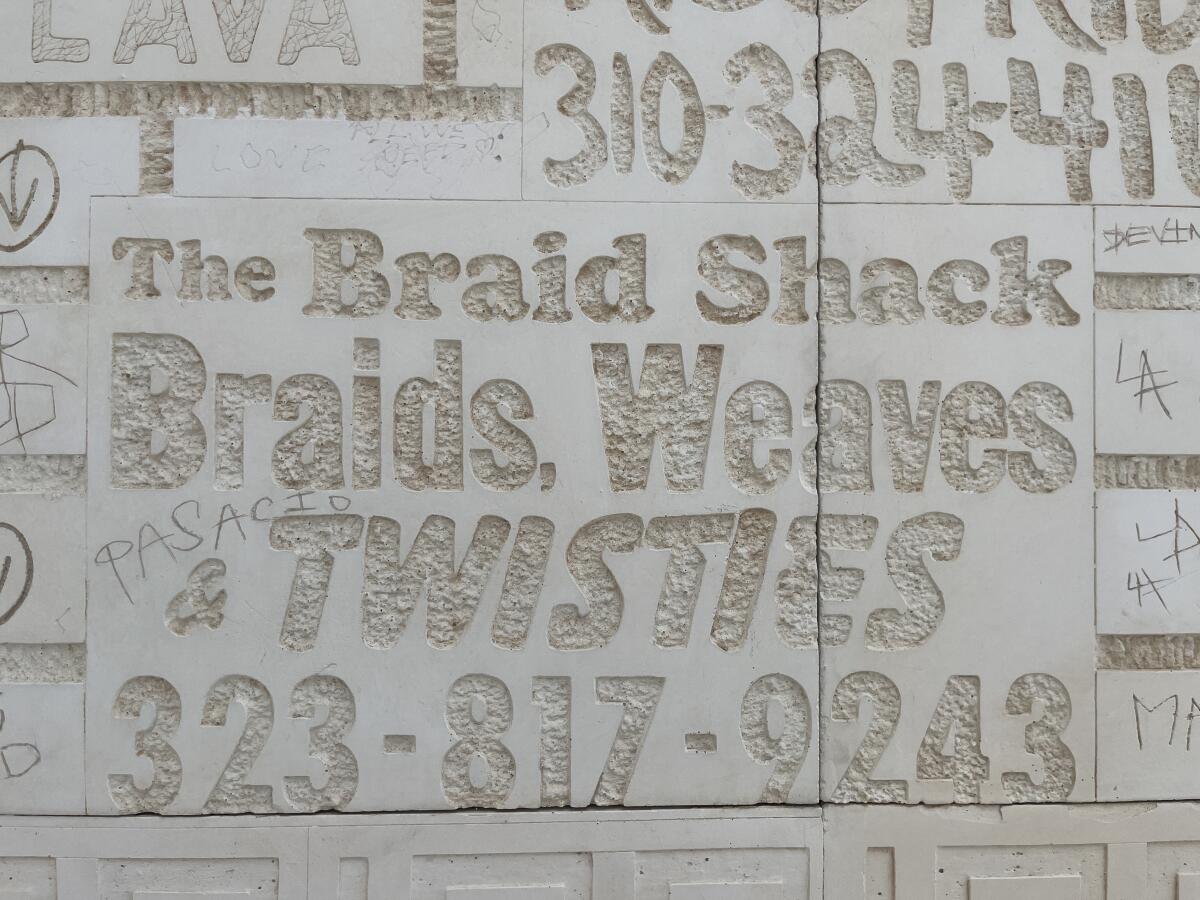
It’s also interesting how Halsey’s piece captures the archaeological layering you might find in an ancient artifact. The Temple of Dendur, which was completed in 10 B.C., bears the signs of so many different kinds of mark-making: the structure, devised by builders and engineers; the surface bas reliefs, which were later added by artists; and the graffiti that has accumulated over that surface over the centuries (much of it deposited by meandering Americans and Europeans).
Halsey’s structure likewise bears these intersections of the formal and informal: Graceful carved reliefs are surrounded by initials that have been more hastily added (often by the friends and family who helped her produce it). Also receiving a shoutout are the initials of our own city: L.A. As she told me back in 2018: “My work is a constant collaboration with people who live in the neighborhood. ... It’s not just architecture that’s for us. It’s for us and by us.”
In other words, a temple not to deities but to the lives of everyday people. What could be more sacred?
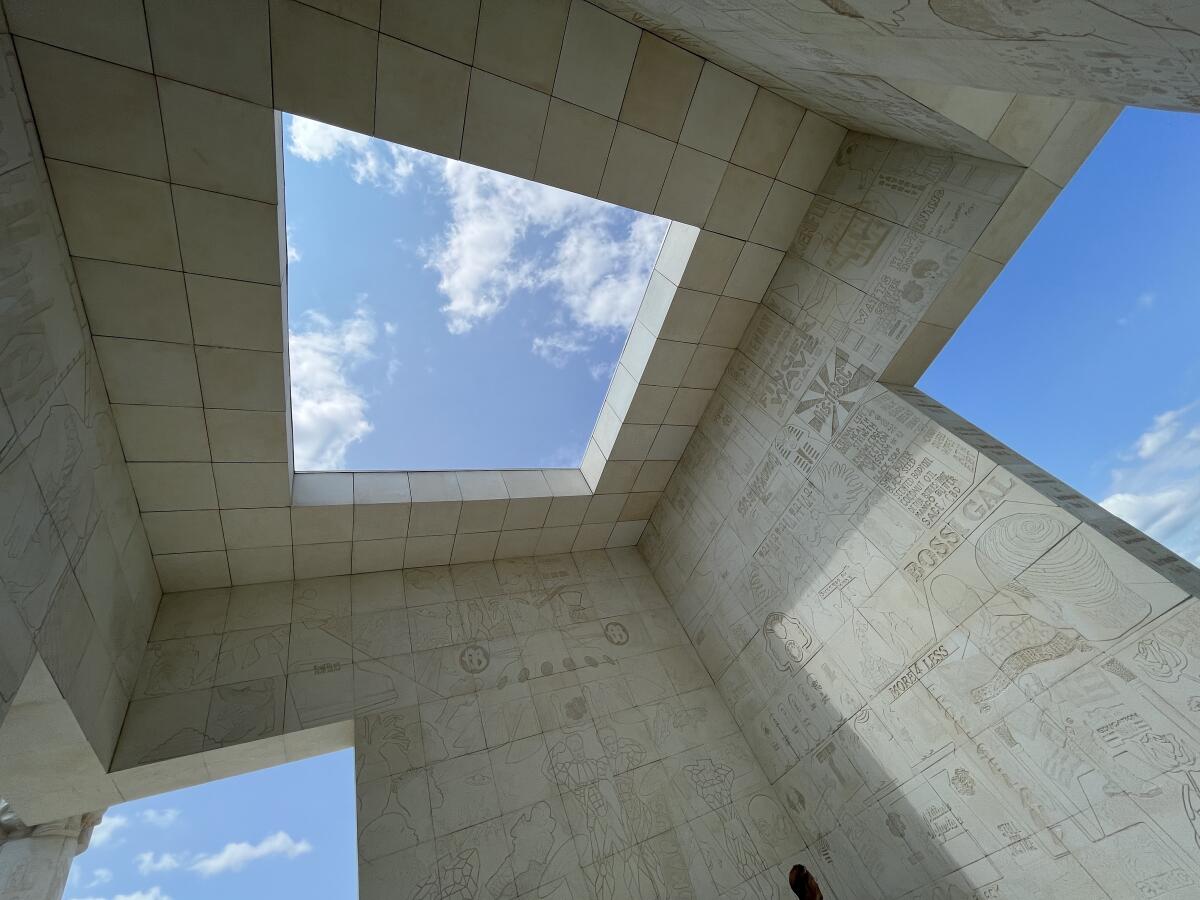
Lauren Halsey, “the eastside of south central los angeles hieroglyph prototype architecture (I),” will be on view on the roof of the Metropolitan Museum of Art in New York through Oct. 22; metmuseum.org.
On and off the stage
The Tony-nominated Broadway revival of “Into the Woods,” directed by Lear deBessonet, has landed at the Ahmanson and Times theater critic Charles McNulty reports that it casts “a euphoric spell.” Partly, it does so by stripping down Stephen Sondheim and James Lapine‘s complex musical. “Props and sets are minimal on a set that keeps the orchestra in view,” he writes. “Tyler Micoleau’s lighting is all that’s required to shift the scenic mood.”
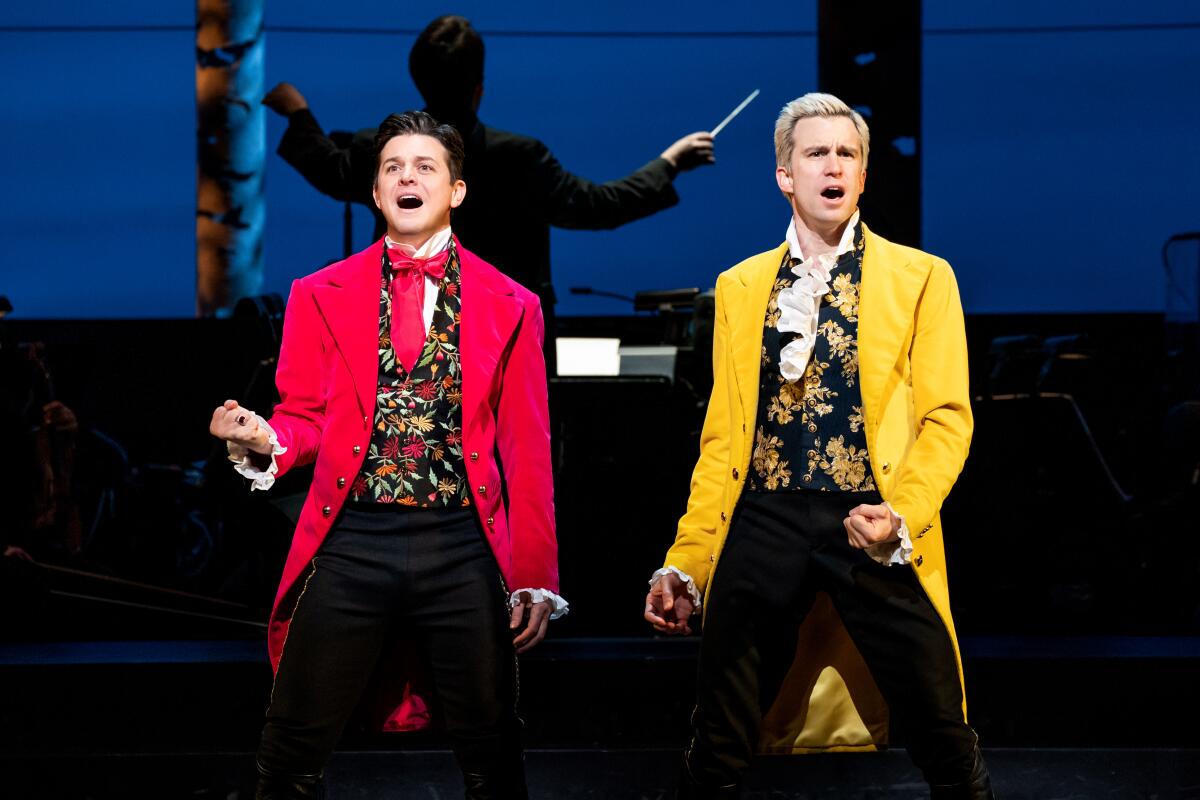
At the Geffen Playhouse, Ramiz Monsef’s thriller “The Ants” — a techno-dystopia about a wealthy couple hunkered down in their bunker of a house — is now running. The plot sounds like a marriage between “Mr. Robot” and that terrible scene in a recent Vanity Fair story about California, in which a bunch of well-to-do Angelenos in a designer home complain about homeless encampments. In other words, the potential for horror was high. McNulty, however, was not impressed.
Enjoying this newsletter? Consider subscribing to the Los Angeles Times
Your support helps us deliver the news that matters most. Become a subscriber.
Game critic Todd Martens checks out “Rogers: The Musical,” at the Disneyland Resort — a musical that began as a gag on the Disney+ series “Hawkeye” and has since morphed into a real-deal piece of live entertainment. (It’s inspired by the story of Steve Rogers, a.k.a. Captain America, and features superhero song-and-dance numbers.) It’s “a bit of a lark, with some big band dancing and a little bit of heart,” he writes. “Not bad for something that could have forever existed as only a clever joke.”
In the galleries
In Exposition Park, the Space Shuttle Endeavour soon will be accommodated inside the rising Samuel Oschin Air and Space Center (next door to the existing California Science Center building), where it will be presented vertically inside a new structure designed by ZGF. It’s no small undertaking, as The Times’ Rong Gong-Lin II and Lorena Iñiguez Elebee report — since this historic rocket weighs hundreds of thousands of pounds.
On Sunday, the Museum of Neon of Art is opening up its Pomona storage facility so visitors can get a peek at all the vintage signage. “The 2,500-square-foot space is crammed with 250 to 300 enormous pieces,” writes Deborah Vankin, “primarily vintage neon signs that were hand-bent by artisans along with vintage equipment, such as a ‘tube tester’ to check the integrity of neon tubes.” (Tours likely are sold out by the time you read this but they are expected to be repeated in the future; keep an eye on MONA’s website.)
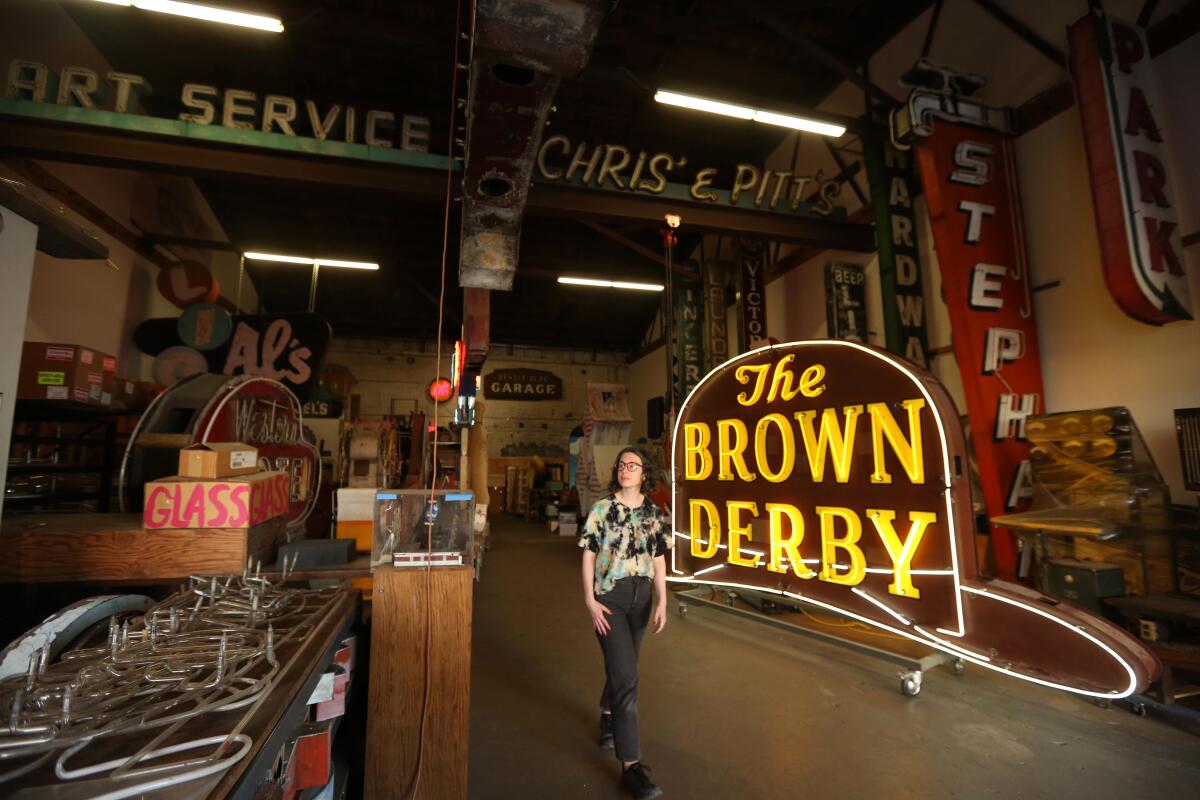
The San Francisco Art Institute has listed its historic campus for sale — including an incredible 1931 mural by Diego Rivera. For a time, an idea had been floated to remove the fresco and sell it separately, but the move was widely decried by San Francisco cultural leaders. The Times’ Salvador Hernandez gets into the details.
Classical notes
It may be a time of doom-loop narratives, but Times classical music critic Mark Swed finds plenty to be inspired by in San Francisco — including a performance of Busoni‘s “flabbergasting” Piano Concerto by the San Francisco Symphony. The concert was led by Esa-Pekka Salonen and on the keys was “superhuman soloist” Igor Levit. “Levit’s fingers flew so fast through absurdly complicated passages,” he writes, “that it was hard to believe one’s own eyes and ears.”
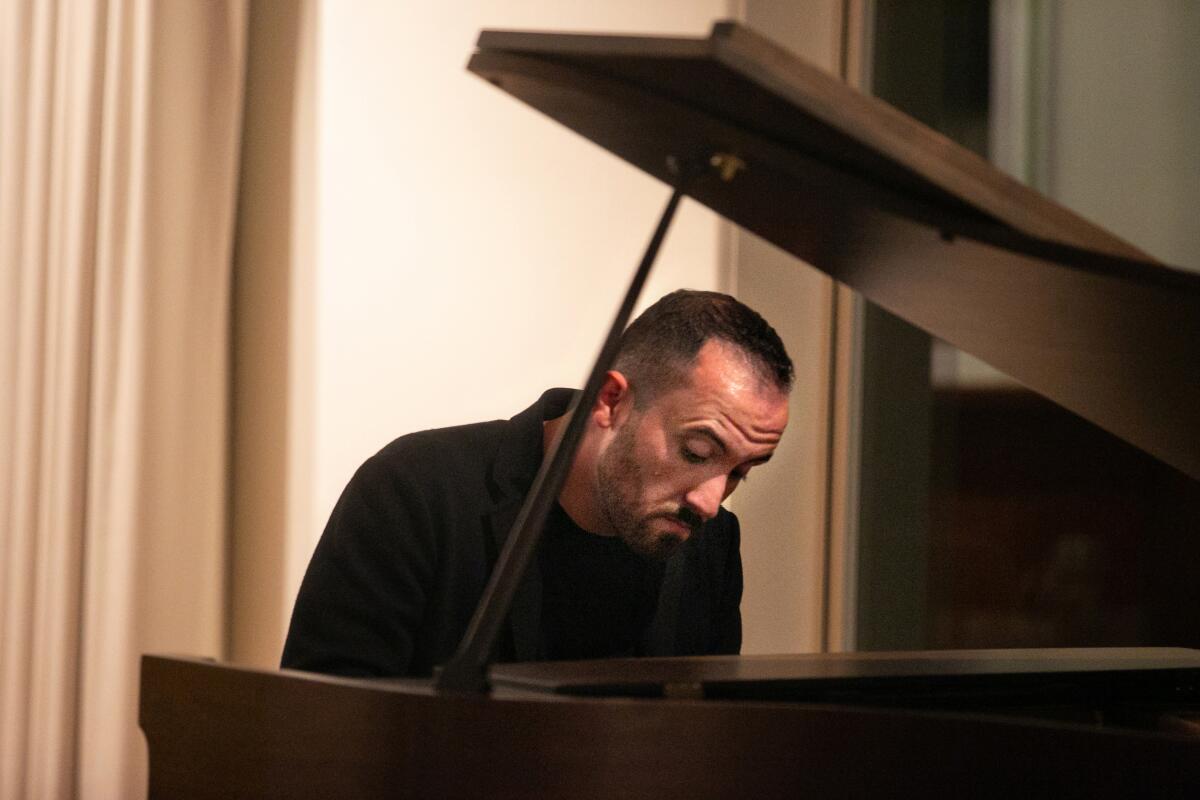
Design time
Josh Spero and Anjli Raval had a bombshell report in the Financial Times this week about sexual harassment allegations against architect David Adjaye, designer of the acclaimed National Museum of African American History in Washington, D.C. Three women who worked in Adjaye’s Accra office have come forward with allegations of exploitation, harassment and assault. In response to the accusations, Adjaye stated, “I absolutely reject any claims of sexual misconduct, abuse or criminal wrongdoing.” Within two days of the report landing, however, a representative for his firm announced that he would be stepping back from certain roles in the office.
On Friday, the Financial Times filed an additional dispatch noting that Adjaye’s office had released the women’s names to Ghanaian police; they’ve since been leaked to the press.
Justin Davidson of Curbed looks at how the allegations fit into architecture’s cult of the lone genius and the workings of a profession where powerful architects wield a lot of control over their workers.
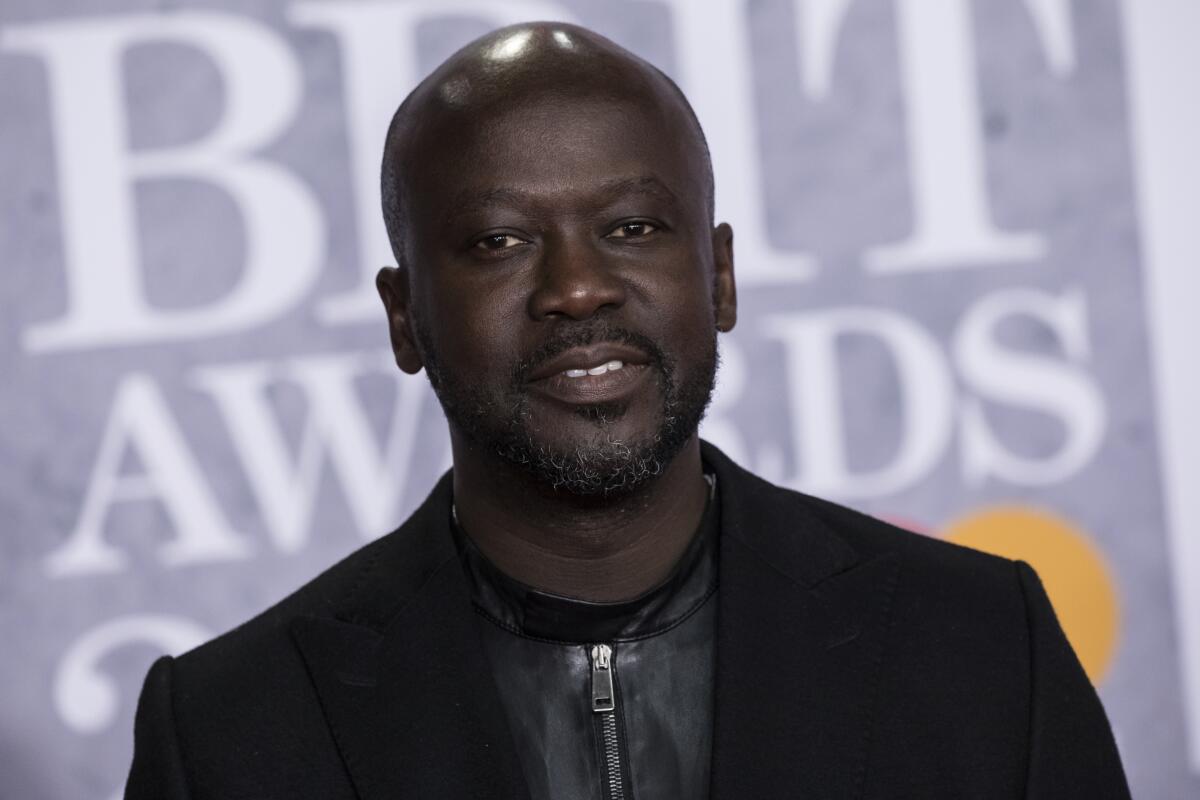
In addition to watching all of “Barry” (NoHo Hank FTW), I’ve spent my COVID recovery reading about parking and residential design. Recent books by Henry Grabar (“Paved Paradise: How Parking Explains the World”) and Frances Anderton (“Common Ground: Multifamily Housing in Los Angeles”) get into the histories of parking and multifamily housing, respectively — and offer an interesting road map for designing more densely and humanely. With a shout-out to one of my favorite TikTok micro-genres: the parking lot reveal!
To mark July 4th, columnist Gustavo Arellano visited the historic Flores Adobe in Pasadena, an old Mexican ranch house that has, over the course of California history, functioned as boarding house, tea room, abandoned ruin and, now, a private residence. It’s an intriguing story of all that was lost in the Mexican American War but also all that remains.
Essential happenings
Steven Vargas rounds up the latest in Los Angeles in his L.A. Goes Out newsletter, including a display of paintings by Dominique Knowles at Hannah Hoffman Gallery.
Moves
The Andy Warhol Foundation has announced the recipients of its spring 2023 grant cycle, and they include the fabulous Los Angeles Poverty Department and the Institute of Contemporary Art Los Angeles, among many others.
Nancy Yao has withdrawn from her role as director of the Smithsonian’s American Women’s History Museum in D.C., following allegations that she mishandled complaints of sexual harassment during her time at the Museum of Chinese in America.
Kate Wagner has been named architecture correspondent for the Nation magazine.
Harvard’s Graduate School of Design has named Jingru (Cyan) Cheng the 2023 Wheelwright Prize recipient.
In the news
— The Young V&A in London (a branch of the Victoria & Albert Museum for children) is facing escalating criticism after removing material that supported queer identities and trans rights.
— Sudan‘s cultural heritage has been devastated by the conflict there — with many museums and cultural centers looted or destroyed — according to a new report organized by Heritage for Peace.
— Coco Fusco has a terrific essay in Hyperallergic touching on the Supreme Court’s affirmative action ban and how it connects to the art world.
— Apollinaire Scherr over at Air Mail has a good interview with Mikhail Baryshnikov on the occasion of his 75th birthday.
— An opera about Frida Kahlo and Diego Rivera has hit the stage at the War Memorial Opera House in the Bay Area. San Francisco Chronicle critic Joshua Kosman says that, on a visual level, it is an “endless delight.”
— Artnet’s Ben Davis has the best analysis I’ve read of the Hannah Gadsby/Pablo Picasso show at the Brooklyn Museum. Find it in one and two parts.
— Pablo Helguera has a fascinating piece about how a style of folk art can come to represent a nation — even if it’s not a long-running craft tradition. He gets into the work of Salvadoran artist Ronald Morán.
— Can we please have public restrooms that look like this in the States?
And last but not least ...
Spending the night in Marina Abramovic’s “Dream House” in Japan is apparently a total nightmare (when it’s not abjectly absurd).
The biggest entertainment stories
Get our big stories about Hollywood, film, television, music, arts, culture and more right in your inbox as soon as they publish.
You may occasionally receive promotional content from the Los Angeles Times.




